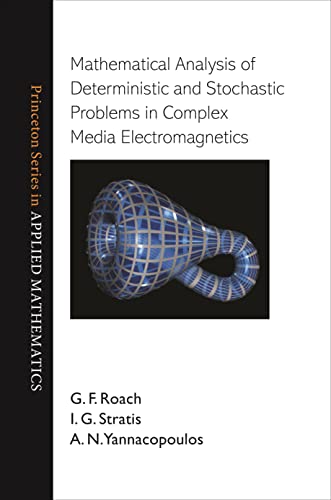Mathematical Analysis of Deterministic and Stochastic Problems in Complex Media Electromagnetics: 42 (Princeton Series in Applied Mathematics)
Mathematical Analysis of Deterministic and Stochastic Problems in Complex Media Electromagnetics: 42 (Princeton Series in Applied Mathematics) is backordered and will ship as soon as it is back in stock.
Couldn't load pickup availability
Genuine Products Guarantee
Genuine Products Guarantee
We guarantee 100% genuine products, and if proven otherwise, we will compensate you with 10 times the product's cost.
Delivery and Shipping
Delivery and Shipping
Products are generally ready for dispatch within 1 day and typically reach you in 3 to 5 days.
Book Details
-
Publisher: Princeton University Press
-
Author: A. N. Yannacopoulos
-
Language: English
-
Edition: 1st Edition
-
ISBN: 9780691142173
-
Pages: 400
-
Cover: Hardcover
-
Release Date: 04-03-2012
-
Dimensions: 9.3 x 6.1 x 1.3 inches
About The Book
Introduction to Ergodic Theory by A. N. Yannacopoulos provides a rigorous yet accessible introduction to ergodic theory, a branch of mathematics that deals with dynamical systems and statistical mechanics. This first edition, published by Princeton University Press, is a comprehensive resource for students and researchers seeking to understand the underlying principles of ergodic theory and its applications.
The book covers a broad range of topics, including:
-
Ergodic Hypothesis: The classical idea that time averages and space averages are equivalent for certain systems.
-
Measure Theory: Foundational concepts of measure theory, essential for understanding ergodic processes.
-
Ergodic Theorems: Detailed analysis of the famous ergodic theorems, including the Birkhoff and von Neumann theorems.
-
Dynamical Systems: Exploration of discrete and continuous dynamical systems and their long-term behavior.
-
Applications: Insights into how ergodic theory is applied in fields like statistical mechanics, information theory, and probability.
Written for advanced undergraduate and graduate students, this textbook offers clear explanations of complex concepts, supported by numerous examples and exercises. Yannacopoulos' treatment of the subject is both thorough and concise, making it an ideal text for those with a background in mathematics, physics, and related fields. The book is also a valuable reference for professionals looking to deepen their understanding of ergodic theory and its practical implications in various scientific domains.





